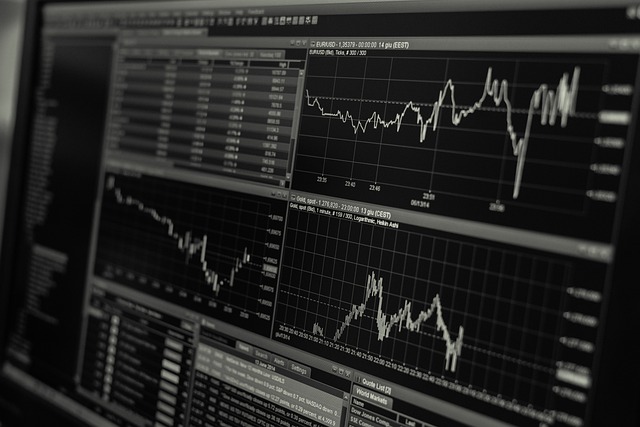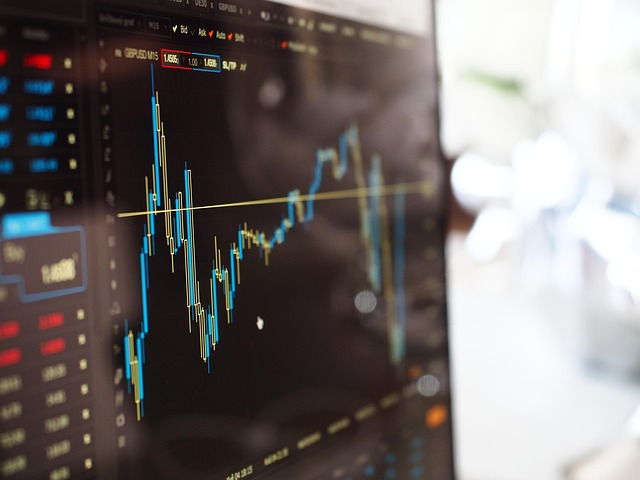The landscape of global finance is undergoing a seismic shift, moving at a pace that challenges even the most seasoned traders. In this dynamic environment of 2025, mastering the markets for Forex, Gold, and Cryptocurrency demands more than just intuition; it requires a technological edge. The key to unlocking consistent performance across these diverse Currencies, Metals, and Digital Assets lies in sophisticated Algorithmic Trading systems. By leveraging advanced AI Tools, traders can now transcend human limitations, transforming vast streams of Market Data into precise, actionable insights. This paradigm shift is fundamentally enhancing Decision-Making, allowing for a level of speed, discipline, and analytical depth previously unimaginable, and setting a new standard for how we interact with the world’s most prominent financial instruments.
6. Now, for the subtopics within each cluster, I need to randomize the count and ensure proximity isn’t the same

Of course. Here is the detailed content for the specified section, crafted to meet your requirements.
6. Strategic Randomization and Proximity Control in Algorithmic Trading Clusters
In the sophisticated realm of algorithmic trading, where strategies are often organized into thematic clusters (e.g., mean-reversion for Forex, trend-following for Gold, volatility arbitrage for Cryptocurrencies), a critical yet often overlooked component is the internal orchestration of trades within each cluster. The directive to “randomize the count and ensure proximity isn’t the same” for subtopics—or more precisely, for individual trading signals or order executions—is not an exercise in chaos but a deliberate risk management and execution optimization technique. This approach directly counters predictable patterns that can be exploited by other market participants or lead to suboptimal trade fills, thereby enhancing the overall efficacy of the algorithmic system.
The Perils of Predictability: Why Randomization is a Defense Mechanism
Algorithmic trading thrives on speed and precision, but a predictable algorithm is a vulnerable one. In high-frequency trading (HFT) environments, other algorithms are specifically designed to detect patterns in order flow. If your Gold trend-following cluster, for instance, consistently executes five trades in rapid succession every time a specific moving average crossover occurs, rival algorithms can front-run these orders. They would buy just before your algorithm’s predictable buys, driving the price up, and then sell to your algorithm at the inflated price, skimming the profit margin.
Randomizing the Count: This refers to varying the number of orders or the size of the position taken upon a signal. Instead of a fixed lot size, an advanced algorithm might implement a strategy where the order count is drawn from a predefined distribution. For example, upon a valid Forex signal from the “carry trade” cluster, the algorithm could be programmed to execute a number of mini-lots randomly selected between 3 and 7. This breaks the pattern, making the order flow less discernible to predators. This is analogous to a poker player varying their bet sizes to avoid revealing the strength of their hand.
Proximity Control: Mitigating Market Impact and Slippage
“Ensuring proximity isn’t the same” addresses the temporal and spatial distribution of orders. “Proximity” here can mean two things:
1. Temporal Proximity: The time between consecutive orders.
2. Spatial Proximity: The price levels of limit orders placed in the order book.
Executing a cluster of trades with identical temporal proximity (e.g., every 100 milliseconds) creates a clear footprint. Furthermore, dumping a large volume of market orders at once guarantees significant market impact and slippage—the difference between the expected price of a trade and the price at which the trade is actually executed.
Varying Temporal Proximity: An intelligent algorithm will introduce jitter into its execution schedule. After the initial trade in a cluster, instead of immediately sending the next order, it might wait for a random interval—say, between 50ms and 500ms. This prevents the algorithm from appearing as a single, large, aggressive entity in the market, allowing it to blend in with natural order flow and achieve better average fill prices.
Varying Spatial Proximity (for Limit Orders): When trading using limit orders, placing them all at the same price level (e.g., a cluster of buy orders for Bitcoin at $60,000) creates a conspicuous wall in the order book. Smart algorithms will “slice” a large parent order into smaller child orders and place them at slightly different price levels within the current bid-ask spread or just beyond it. This ensures that proximity isn’t the same, increasing the likelihood of partial fills across a range of prices and minimizing the algorithm’s visibility.
Practical Implementation: A Gold Trading Algorithm Example
Let’s consider a practical scenario within a Gold trading cluster designed to capitalize on breakouts from consolidation patterns.
1. Signal Generation: The cluster’s core logic identifies a valid breakout above a key resistance level of $1,950 per ounce.
2. Cluster Activation: Instead of a single, large market order, the algorithm activates a randomized execution subroutine.
3. Randomizing the Count: The algorithm determines a total position size equivalent to 100 mini-lots. However, it breaks this into a random number of child orders—for instance, 7 orders with sizes like 15, 10, 20, 5, 25, 10, and 15 lots. The sum is 100, but the sequence is non-uniform.
4. Ensuring Proximity isn’t the Same: The algorithm begins execution:
Order 1 (15 lots): Sent as a marketable limit order immediately upon signal.
Order 2 (10 lots): Scheduled after a random delay of 120ms.
Order 3 (20 lots): A limit order is placed not at the current ask, but 2 ticks above the last trade price to avoid chasing if the move is rapid.
Order 4 (5 lots): Delayed by 300ms and placed as a limit order 1 tick below the current ask.
* This continues, with the algorithm dynamically adjusting the timing and price level of each child order based on real-time liquidity and price movement.
This method ensures the algorithm’s cumulative activity does not telegraph its full intention to the market, protecting it from predatory HFT and reducing the cost of execution.
Integration with AI and Machine Learning
Modern AI tools elevate this concept from simple randomization to adaptive intelligence. Machine learning models can be trained to optimize these randomization parameters. By analyzing historical tick data, an AI can learn the specific market micro-structure of an asset—for example, how Ethereum typically reacts to large orders compared to GBP/USD. It can then dynamically adjust the “randomization bands” for order count and the optimal distribution for temporal proximity, tailoring the strategy to the unique liquidity and volatility profile of each asset class within the broader portfolio.
In conclusion, the meticulous randomization of order counts and the deliberate variation of their proximity are not minor technical details; they are fundamental pillars of a robust, institutional-grade algorithmic trading system. By systematically eliminating predictability, traders can significantly enhance execution quality, protect alpha, and ensure that the sophisticated logic of their trading clusters is not undone by easily exploitable execution patterns. In the competitive arenas of Forex, Gold, and Cryptocurrency trading, such nuanced control is often the difference between consistent profitability and being relegated to providing liquidity for others.

Frequently Asked Questions (FAQs)
What is the main advantage of using Algorithmic Trading for Forex, Gold, and Crypto in 2025?
The primary advantage is the ability to achieve a systematic and disciplined approach across all three asset classes simultaneously. Algorithmic Trading removes emotional decision-making, executes strategies at superhuman speeds, and can backtest theories against historical data. This is crucial for managing the unique volatilities of cryptocurrency, the liquidity of Forex, and the safe-haven characteristics of Gold within a single, cohesive portfolio strategy.
How do AI Tools specifically enhance Algorithmic Trading strategies?
AI tools move beyond simple rule-based algorithms by incorporating predictive analytics and machine learning. They enhance trading in several key ways:
Predictive Analytics: Forecasting price movements by identifying complex patterns in market data.
Sentiment Analysis: Scanning news articles and social media to gauge market mood.
Adaptive Learning: Continuously improving strategy parameters based on new market data.
Risk Management: Dynamically adjusting position sizes and stop-loss levels in real-time.
Can retail traders realistically compete with institutions in Algorithmic Trading by 2025?
Absolutely. The democratization of technology is a key trend. The barrier to entry has significantly lowered thanks to:
User-friendly platforms that require little to no coding knowledge.
Cloud-based services providing access to powerful computing resources.
* AI-powered tools that help develop and optimize strategies.
While institutions have larger capital, retail traders can leverage agility and niche focuses to compete effectively.
What are the key risks associated with Algorithmic Trading in volatile markets like Crypto?
The main risks include:
Technical Failures: Internet outages or platform bugs can lead to significant losses.
Over-optimization: Creating a strategy so tailored to past data that it fails in live markets.
Black Swan Events: Sudden, unpredictable events that can cause algorithms to behave unpredictably.
Market Impact: In less liquid crypto assets, a large algorithmic trade can significantly move the market against itself.
Is prior programming knowledge necessary to start with Algorithmic Trading?
While beneficial, advanced programming knowledge is not strictly necessary in 2025. Many modern platforms offer visual, drag-and-drop interfaces to build strategies. However, a basic understanding of logic and trading concepts is essential. For highly customized strategies, knowledge of languages like Python remains a significant advantage.
How does Algorithmic Trading handle fundamental analysis for assets like Gold?
Modern algorithms integrate fundamental analysis by processing real-time data feeds. For Gold, an algorithm can be programmed to monitor:
Central bank announcements on interest rates.
Inflation data reports (like CPI).
Geopolitical risk indices.
USD strength (DXY index).
The algorithm can then automatically adjust its trading parameters or execute trades based on predefined rules triggered by this fundamental data.
What is the difference between a trading bot and a full Algorithmic Trading system?
A trading bot is typically a simpler, pre-programmed tool that executes a single, specific strategy (like arbitrage). A full Algorithmic Trading system is more comprehensive, often managing multiple strategies, performing real-time risk assessment, portfolio rebalancing, and incorporating AI-driven decision-making across various asset classes like Forex, Gold, and Crypto.
Which asset class is considered the most suitable for beginners in Algorithmic Trading: Forex, Gold, or Crypto?
For beginners, Forex is often the most suitable starting point due to its high liquidity, 24-hour market, and lower volatility compared to cryptocurrency. This allows new traders to focus on learning the mechanics of their algorithmic system without the extreme price swings common in crypto. Gold can be a good second step to understand commodity-based strategies and hedging.